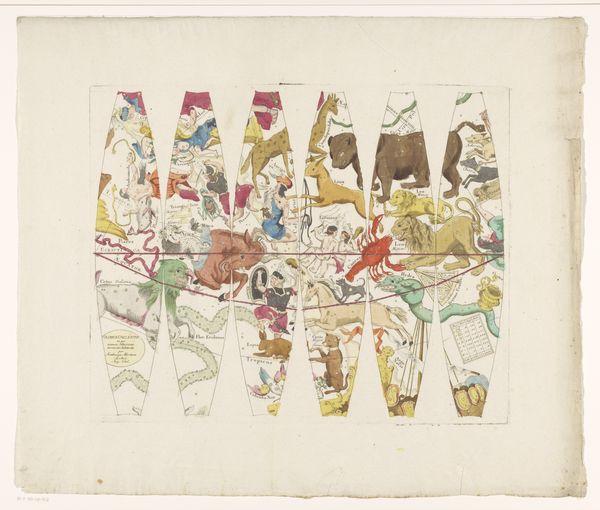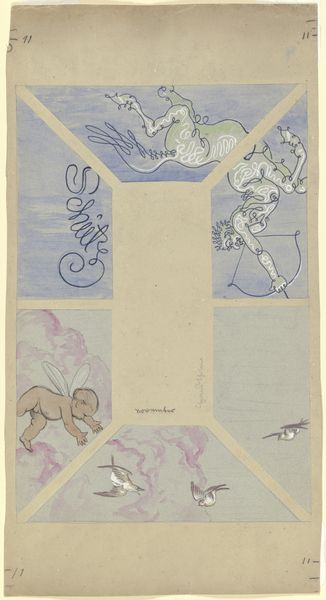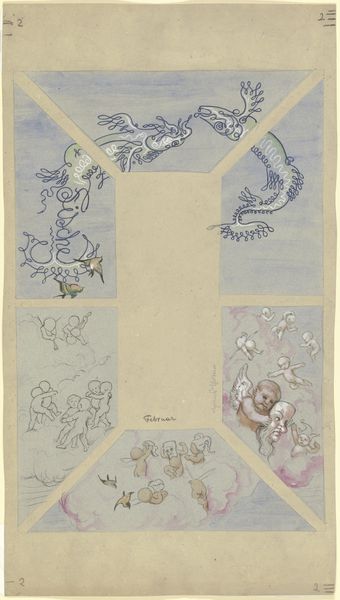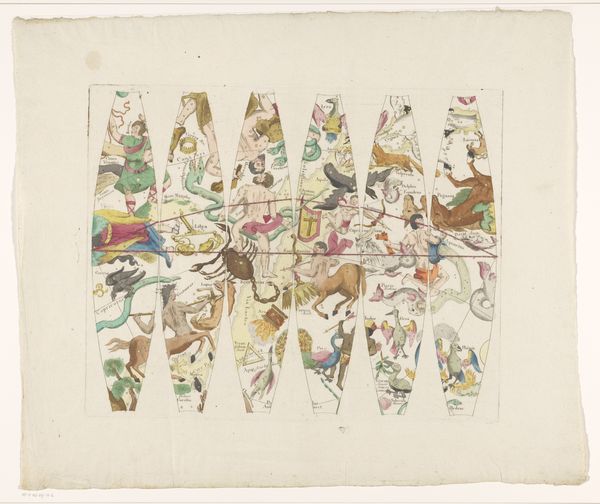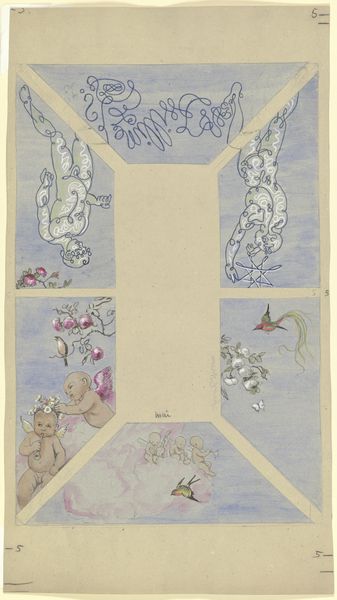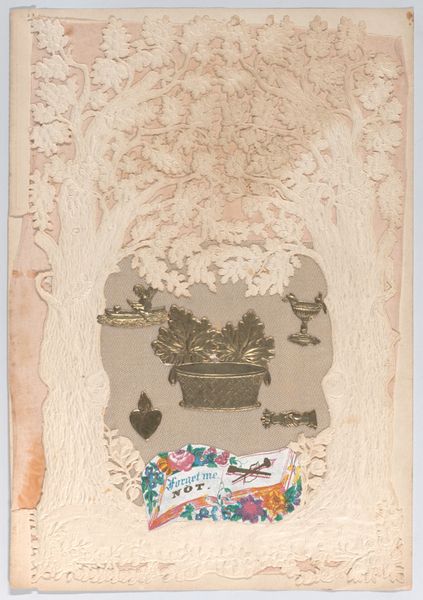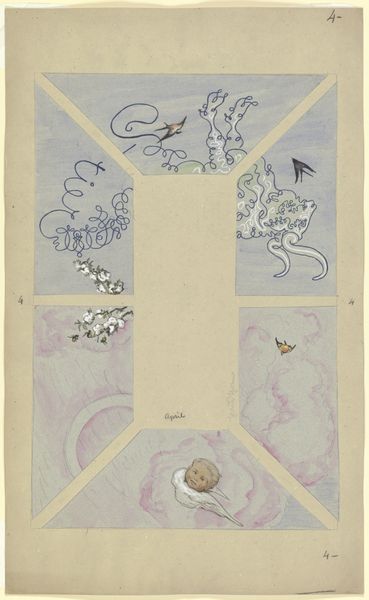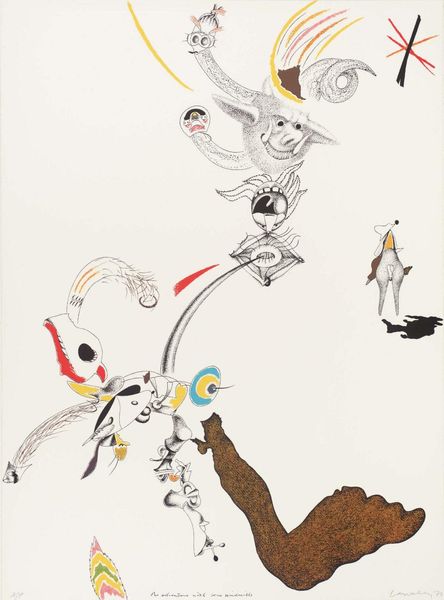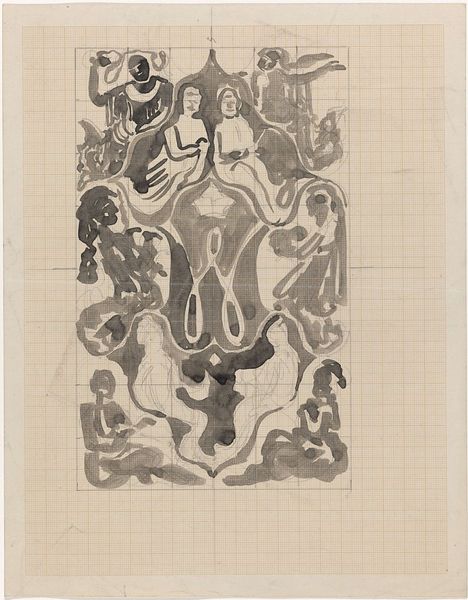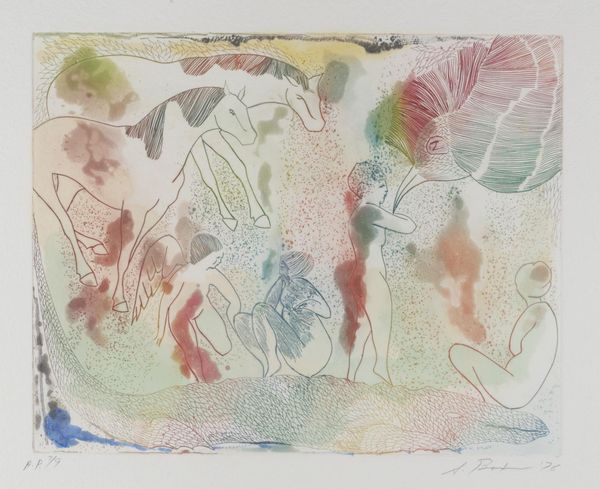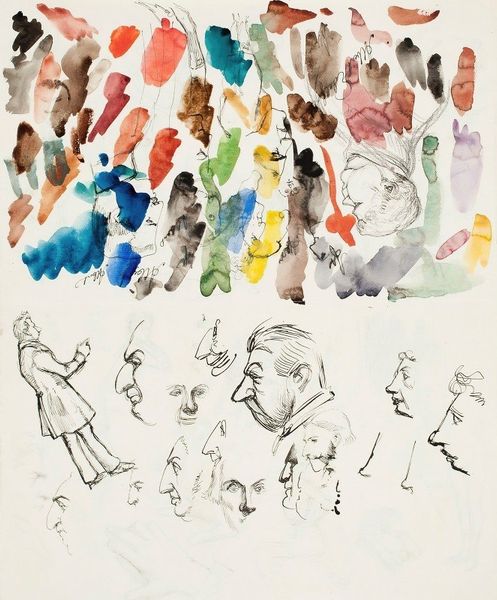
Dimensions: height 281 mm, width 227 mm
Copyright: Rijks Museum: Open Domain
Curator: This watercolor drawing, simply titled "Six Hats" or "Zes hoeden" as it's known in Dutch, was created around 1859. There is little historical documentation regarding its genesis. What are your initial thoughts? Editor: Visually, I find this such an interesting rendering of potential sartorial materials. They look almost weightless, as if a slight breeze could carry them off the page. It speaks of the artisanal labour invested in embellishment. Curator: Absolutely. The hats, more accurately described as bonnets and caps, aren’t just fashion accessories. They speak volumes about gender, class, and societal expectations within the context of 19th-century Europe. Headwear, you see, often indicated marital status and social standing, especially for women. Editor: I'd like to add, though, that even with the delicate touch of watercolour, the image conveys the reality of production, the repetitive labour needed to achieve the exquisite details that signified class and femininity. The lace and ribbons were commodities, manufactured for a specific market. How does that affect our understanding? Curator: Precisely. If we dig a little deeper, we could also interpret these hats, not just as markers of privilege, but also sites of potential resistance. Adornment can be a tool of self-expression, a quiet subversion against restrictive norms. Editor: I agree with you on the visual side of their representation, but there is definitely more at play. Look at how these were produced for a targeted market and for an assigned gender and a clear idea of wealth. Curator: Ultimately, aren't these hats potent symbols, imbued with the complexities of their historical and material context? Each bow, each carefully rendered stitch, tells a story. Editor: And it makes me wonder about those workers that spent countless hours working on those hats. And this rendering might provide insights into their socio economical conditions at the time. Curator: Indeed. This small artwork serves as a poignant reminder of the intertwined nature of fashion, labour, and identity in a bygone era. Editor: A lasting proof of time represented through labour. Thank you!
Comments
No comments
Be the first to comment and join the conversation on the ultimate creative platform.
